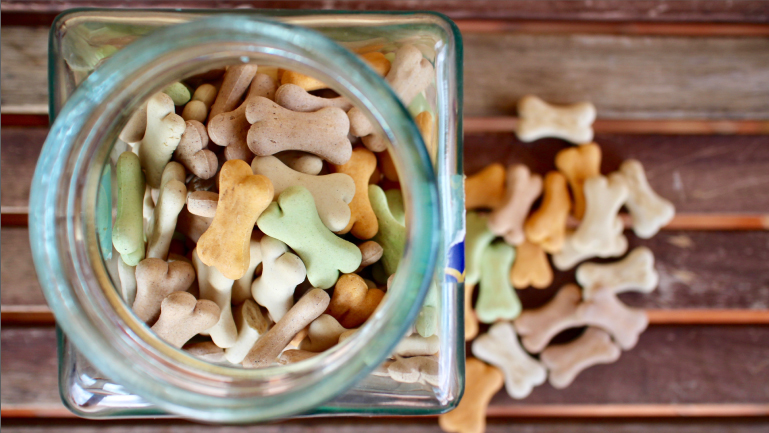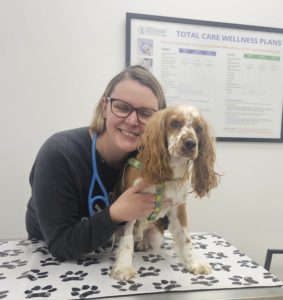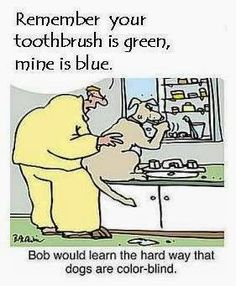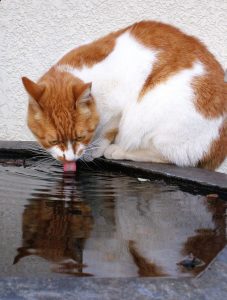Healthy Balanced Diets
It is a universally known fact that pets require good nutrition to live long, happy lives. A more elusive fact, however, is how often and what specifically we should feed our pets. Perhaps the biggest issue here is the fact there is as big a variance in types of foods as there are types of pets. While there is no definitive answer of “feed your pet this much of this food at this time” there are a few easy tips you can follow to find that healthy diet balance.
Keep It Simple
Most commercial dog and cat food is designed to meet all your pet’s nutritional needs 1. The main consideration is to buy food to match your pet’s stage of life (puppy/kitten, pregnant, adult, elder, etc.). To make sure that your pet is eating a balanced diet, check the packaging labels for a “statement of nutritional adequacy” 2. This means that this food has passed the standards established by the Association of American Feed Control Officials (AAFCO) 1. While a large debate exists between wet vs. dry food, both have benefits. Dry food is ideal for keeping your pet’s teeth clean and strong whereas wet food is rich with moisture and can be advantageous for pets that do not drink a lot of water throughout the day.
Watch Out for Labels
There is not a lot of valid information to be gleaned from the advertising on packaging and labels. If an ingredient is included in the title of the food, then it is government regulated that this food must contain at least 95% of that ingredient2. For instance, a food called Seafood Delight would have to contain at least 95% fish. However, this may not be the human grade fish you would expect to find on your plate. You should also be weary of popular terms from product names, like “premium” or “natural”, because they are subjective and are not regulated by any other source. “Natural”, especially, does not necessarily mean “organic” or “healthier” 2. When in doubt, simply look for some indication that the food meets the standards of AAFCO, or that the production of the food has been regulated by The U.S. Food and Drug Administration’s (FDA) Center for Veterinary Medicine 2.
Alternatives
Many people, feeling weary about commercial pet food, opt to make their own pet food. While this can certainly be advantageous for your pet, we recommend that you seek out the guidance of a veterinarian or certified pet dietician to ensure that all of your pet’s nutritional needs are being addressed 1.
How Much/How Often?
Once again, there is a lot of variety to the answer of “how much should I feed my pet and how often?” It goes without saying that a kitten wouldn’t eat the same amount as a Great Dane. Your vet will be able to give you a general estimate of how much you should be feeding your pet, but the exact amount will most likely need to be determined through trial and error. Try increasing and decreasing amounts of food until your pet is at their ideal weight 3. Use a measuring cup or scoop to always be aware of how much you’re feeding your pet, that way you can make proper adjustments. Treats also count in this balancing act. Because they are more calorically dense, they can cause your pet to gain weight quickly if they are offered too often. Consistency is another important factor to finding a balance 3. Be sure to feed your pet at the same time every day, and stick to the same brand of food. If you do decide to change portions or brands, do so gradually over a period of a few days. A dramatic change could potentially leave your pet feeling sick. Have no fear though, because eventually you will find the right amount of food to feed your pet every day.
Take Away Points
- There is a lot of variance in pet nutrition—make sure to talk to a vet or dietician to get a general idea of where to start. The veterinarians at your local Total Veterinary Care would be glad to answer any dietary questions you have pertaining to your pet’s needs.
- Look for approval from AAFCO to ensure that your commercial pet food meets all of your pet’s nutritional requirements.
- Be wary of labels; “Natural” does not necessarily mean “better”.
- Trial and error is the best way to figure out how much food to feed your pet. Closely monitor their weight and make adjustments to the amount as necessary.
References
- “A Healthy Diet for Your Dog.” WebMD. WebMD, n.d. Web.
- “Understanding Pet Food Labels.” Animal Planet. N.p., 26 Feb. 2015. Web.
- Dr. Patty Khuly VMD | January 20, 2012. “10 Things You Should Know About How Much to Feed Your Pet.” Vetstreet, www.vetstreet.com/our-pet-experts/10-things-you-should-know-about-feeding-your-pet.







